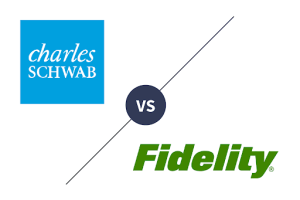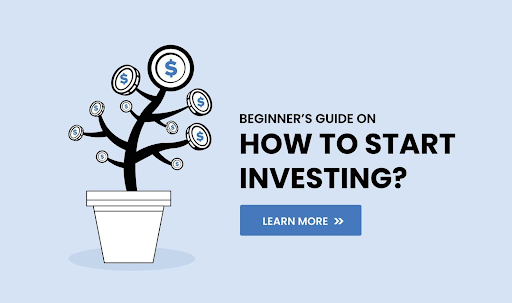For many in the U.S., the journey to financial security often begins with saving. But to truly build wealth and outpace inflation, basic investing for beginners is a crucial next step. Investing means putting your money to work with the expectation of earning a return over time, allowing your money to grow through the power of compounding.
As of mid-2025, getting started with investing in the U.S. is more accessible than ever, even with a modest amount of money. This guide will walk you through the essential steps to begin your investment journey, focusing on practical advice for beginners.
Why Invest? The Power of Growth and Inflation
Leaving your money solely in a traditional savings account, while safe, means its purchasing power will likely erode over time due to inflation. Historically, the U.S. stock market, as measured by the S&P 500 index, has generated an average annual return of about 10% before inflation. While past performance doesn’t guarantee future results, investing offers the potential for your money to grow significantly over the long term, helping you reach crucial financial goals like retirement, a down payment on a home, or funding education.

Step 1: Lay the Financial Foundation
Before you dive into the market, ensure your personal finances are in order:
- Build an Emergency Fund: Aim for 3-6 months’ worth of living expenses in an easily accessible, high-yield savings account. This prevents you from having to sell investments at an inopportune time if an unexpected expense arises.
- Pay Off High-Interest Debt: Prioritize paying down high-interest debts like credit card balances or personal loans. The interest you pay on these debts often outweighs potential investment returns. For instance, if you’re paying 20% on a credit card, you’d need a 20% return on your investments just to break even.
Step 2: Define Your Investment Goals and Timeline
What are you investing for? Your goals will dictate your investment strategy and the types of accounts you open.
- Short-Term Goals (Less than 5 years): For goals like a down payment on a car or a vacation, consider lower-risk options like high-yield savings accounts or Certificates of Deposit (CDs), as the stock market can be volatile in the short term.
- Long-Term Goals (5+ years): Retirement, a child’s college education, or general wealth building are ideal for stock market investing, where historical returns are more favorable over extended periods.
Step 3: Understand Your Risk Tolerance
How comfortable are you with the value of your investments going up and down?
- Conservative: You prioritize capital preservation and stable income, even if it means lower potential returns. You might prefer more bonds and less stock.
- Moderate: You’re willing to accept some fluctuations for potentially higher returns. You might have a balanced mix of stocks and bonds.
- Aggressive: You’re comfortable with significant volatility for the highest potential returns. You might allocate a larger portion to stocks.
Your risk tolerance should align with your investment timeline. Generally, the longer your time horizon, the more risk you can afford to take, as you have more time to recover from market downturns.
Step 4: Choose Your Investment Account Type
In the U.S., you have several options, each with different tax implications:
- Tax-Advantaged Retirement Accounts:
- 401(k) (Employer-Sponsored): If your employer offers a 401(k), especially with a company match, contribute at least enough to get the full match – it’s essentially free money! Contributions are often pre-tax, and growth is tax-deferred until retirement. Some employers also offer Roth 401(k)s, where contributions are after-tax, but qualified withdrawals in retirement are tax-free.
- Individual Retirement Accounts (IRAs):
- Traditional IRA: Contributions may be tax-deductible, and growth is tax-deferred. You pay taxes upon withdrawal in retirement.
- Roth IRA: Contributions are made with after-tax money, but qualified withdrawals in retirement are entirely tax-free. This is often a great option for younger investors who expect to be in a higher tax bracket later in life.
- 529 Plans: Tax-advantaged accounts specifically for education savings.
- Taxable Brokerage Accounts: These are general investment accounts without specific tax advantages, but offer flexibility for any goal. You pay taxes on capital gains, dividends, and interest each year.
Step 5: Select Your Investment Platform
For beginners in the U.S., online brokers and robo-advisors are excellent choices:

- Online Brokerage Accounts: These platforms allow you to choose and manage your investments yourself. Many offer $0 minimums and commission-free trading for stocks and ETFs.
- Popular Options: Fidelity, Charles Schwab, E*TRADE, Vanguard, Merrill Edge, Firstrade, Robinhood (known for ease of use but with fewer advanced features).
- Robo-Advisors: These are ideal if you want a hands-off approach. They use algorithms to build and manage a diversified portfolio for you based on your goals and risk tolerance, typically for a low annual fee (e.g., 0.25% – 0.50% of assets under management).
- Popular Options: Betterment, Wealthfront, Fidelity Go, Schwab Intelligent Portfolios, Acorns (known for micro-investing/round-ups)..
Step 6: Choose Your Investments (Keep It Simple!)
For basic investing for beginners, focus on diversification and low costs:
- Exchange-Traded Funds (ETFs) & Index Funds: These are often the best starting point. An ETF or index fund holds a basket of many different stocks or bonds, providing instant diversification across various companies or sectors. For example, an S&P 500 index fund tracks the performance of 500 of the largest U.S. companies. They typically have very low expense ratios (annual fees).
- Mutual Funds: Similar to ETFs, they pool money from many investors to buy a diversified portfolio. However, some mutual funds can have higher fees and may be actively managed, potentially underperforming index funds.
- Individual Stocks: While exciting, buying individual stocks is riskier for beginners as it lacks immediate diversification. It’s generally recommended to start with funds before diving into individual company analysis.
Rule of Thumb: Diversify! Don’t put all your eggs in one basket. By investing in a mix of different asset classes (like stocks and bonds) and diversifying within those classes (e.g., large-cap, small-cap, international stocks), you reduce overall risk.
Step 7: Fund Your Account and Start Investing Regularly
- Start Small: You don’t need a lot of money. Many platforms allow you to start with $0 minimums or with fractional shares (buying a portion of a stock). The important thing is to start.
- Automate Your Investments: Set up automatic transfers from your bank account to your investment account each payday. This is known as “dollar-cost averaging,” which involves investing a set amount regularly, regardless of market fluctuations. It helps smooth out returns and reduces the emotional stress of trying to “time the market.”
Step 8: Monitor (But Don’t Obsess) and Learn
- Review Periodically: Check your portfolio’s performance a few times a year. Ensure it still aligns with your goals and risk tolerance.
- Rebalance (If Needed): If one asset class has grown significantly, you might need to rebalance your portfolio to bring it back to your target allocation.
- Keep Learning: The world of investing is vast. Read reputable financial news, listen to educational podcasts, and utilize the learning resources offered by your chosen brokerage.
Conclusion
Learning how to start investing might seem complex, but by breaking it down into manageable steps, U.S. beginners can confidently embark on their wealth-building journey. From estalishing a solid financial foundation and defining your goals to choosing the right accounts and diversified investments, the path to financial growth is clearer than ever.
Remember, the most crucial step is to simply begin. Start small, invest consistently, and embrace the power of compounding over time. With patience and a disciplined approach, your initial investments can flourish, setting you on a path towards achieving your long-term financial aspirations.










